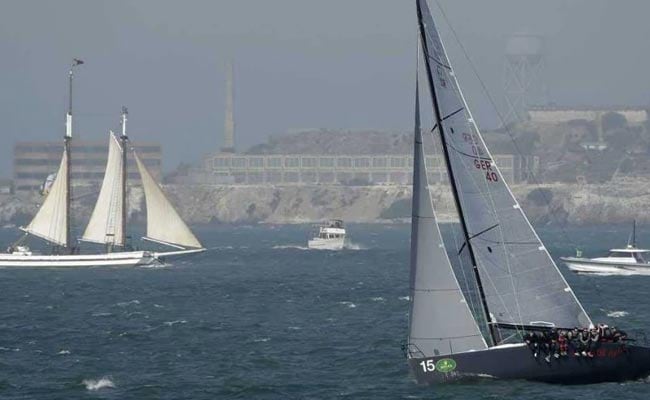Adam Lachacz
CTVNewsEdmonton.ca
Updated Sept. 26, 2021
EDMONTON -
Alberta's former chief medical officer of health and a critical care physician penned a letter Sunday urging action from the province to slow community spread of COVID-19.
As hospitalizations continue to climb and the Canadian Armed Forces prepares to assist with patient transfers out of the province, Dr. James Talbot and Dr. Noel Gibney say the province needs to take action this week “to prevent more disease, deaths, and suffering.”
“Albertan’s hospital system, especially ICUs, are under more killing stress than at any time in the province’s history,” the pair of doctors said in a letter to the province’s new health minister.
“We are within days of being forced to implement a triage protocol which will force health care workers to make life and death decision on who will get scarce resources, like ventilators,” they wrote.
The doctors recommend mandating vaccine passports for entry into non-essential businesses and making vaccines mandatory for all provincial employees and agencies, like Alberta Blue Cross and the Workers Compensation Board.
COVID-19 in Alberta: 11 deaths, as ICU patient count hits record high on Friday
In their letter, the doctors also said that while those measures increase vaccine uptake, “urgent actions” are necessary to “rapidly deal with the urgent crisis in Alberta” of rampant community spread of COVID-19.
To slow case growth, the doctors recommended the provincial government:
transfer ICU patients to ICUs in other provinces immediately;
restore contact tracing of patients who test positive for COVID-19;
mandate masking inside schools, including when students are seated at their desks
implement a series of “fire break” closures and restrictions for a minimum four weeks
The letter was addressed to Health Minister Jason Copping who took over the portfolio this week from Tyler Shandro.
“Even if you were to implement the measures that we recommend today, it will take at least four weeks for them to have an effect on ICU beds,” the letter said. “Time is of the essence. Albertans deserve better.”
CTV News Edmonton reached out to Copping for comment.
In an interview with CTV News, Talbot attributed the situation Alberta is experiencing to the open for summer plan.
“When the government in July got rid of all the precautions, at the same time they guaranteed that this fourth wave was going to happen and that it would be so strong and that it would put intense pressure on the health care system,” he said.
“And then in August, when their own projections showed that, that’s exactly what was going to happen. They choose not to inform the public and as a consequence, there was a lost opportunity for individuals and businesses to make better choices.”
Talbot said the rise of deaths and hospitalizations in the province is a concerning trend that needs to stop and is entirely preventable.
“The longer the minister delays in taking action, the more people are going to join that total,” he added.
“The 20 per cent (who are unvaccinated) are clogging up our hospitals now and they’re depriving the rest of Albertans the opportunity to have a functioning health care system that’s there for them when they need it.”
The letter intended to show the sense of urgency that is needed to address the increasing amount of pressure hospitals are facing, Talbot said.
“We know the (measures we recommended) have worked in the past,” he said. “So we’re asking the minister to recognize that there’s a crisis and that there’s a need, an urgent need for action on the part of the government.
“We want to see the minister act with a degree of urgency that’s required to help save that system.”
With files from CTV News Edmonton's Amanda Anderson
Alberta's ICUs are facing immense pressure as the number of patients needing care continues to rise during the fourth wave of COVID-19
Author of the article:Jason Herring
Publishing date:Sep 26, 2021 • 54 minutes ago • 3 minute read • 60 Comments

Two prominent Alberta doctors are calling for a provincewide “fire break” lockdown and mandatory vaccinations for all employees in a letter to the province’s new health minister.
These measures and more are needed to address the “crushing COVID-19 burden being borne by Alberta and Alberta Health Services,” wrote Dr. Noel Gibney and Dr. James Talbot in the letter to Health Minister Jason Copping on Sunday. Gibney is a critical-care specialist and professor emeritus at the University of Alberta, while Talbot served as Alberta’s chief medical officer of health from 2012 to 2015.
“Alberta’s hospital system, especially ICUs are under more killing stress than at any time in the province’s history,” the letter states.
“All Albertans have and do depend on our acute-care hospitals. We are within days of being forced to implement a triage protocol which will force health-care workers to make life and death decisions on who will get scarce resources, like ventilators.”
Alberta’s ICUs are facing immense pressure as the number of patients needing care continues to rise during the fourth wave of COVID-19.
As of Sunday morning, AHS said there were 302 patients in Alberta’s 368 available ICU beds, the majority of whom have tested positive for the novel coronavirus. On Friday, the last day data was available, Alberta had 1,061 COVID-19 patients in hospitals, including 243 in ICUs.
Including the 195 surge beds Alberta has brought online to deal with the strain, Alberta’s ICU capacity sits at 82 per cent. But the ICUs are operating at 175 per cent of their baseline capacity.
Last week, Dr. Verna Yiu, AHS president and CEO, said part of the reason why Alberta ICUs have been able to keep pace with new admissions is because of the number of deaths that are occurring daily. Over the past seven days, Alberta has reported an average of 14 daily deaths from COVID-19.
The letter from Talbot and Gibney calls for Copping to implement seven measures, including immediately beginning transfers of Alberta ICU patients out-of-province, making vaccine passports mandatory to access all non-essential services and making vaccines mandatory for all employees of essential and non-essential businesses.
It also calls on the province to restore contact tracing of patients who test positive for COVID-19 and to mandate masking indoors in schools, including in classrooms.
As for the so-called fire break, the doctors are asking for the four-week closure of nightclubs, casinos, bars and indoor dining at restaurants, the closure of gyms and indoor sports, and strictly limiting capacity at stores, malls and places of worship.
Talbot said in an interview with Postmedia the measures are now necessary because of intense pressure on Alberta’s hospital system across all five health zones. That pressure is inhibiting immunized Albertans from getting care, including the cancellation of all non-urgent surgeries, he said.
“No matter how you want to score this one, we’re in massive trouble,” Talbot said.

“With every day that (Copping) doesn’t take action, we’re looking at another 15 Albertans dead, more pressure on the ICU system and potentially making triage decisions of life and death which are not appealable by the families of the people who are told they are going to be denied service because there isn’t an ICU bed for them.”
As of Friday, 82.3 per cent of eligible Albertans are partially immunized against COVID-19, and 73.4 per cent are fully immunized. Those numbers have seen a boost in the last week after Alberta announced its vaccine passport system, dubbed the “restrictions exemption program.” Among Albertans of all ages, 70 per cent have at least one shot and 62.4 per cent have two.
Talbot argued the one-in-five eligible Albertans who haven’t gotten vaccinated are “clogging up” the hospitals for those who need elective surgeries or critical-care treatment.
He said the letter is directed to Copping with hopes the new health minister can chart a new course on Alberta’s COVID-19 response.
“There are two major jobs a health minister has,” Talbot said. “The first is to protect the health of Albertans and the second is to keep the acute-care health system functioning. And both of those are in peril.
“I don’t know how much more information the minister will require to recognize now is the time to take urgent action.”
Copping’s office did not immediately respond to a request for comment.
— With files from the Edmonton Journal
'This is completely extraordinary. I don't think any health authority should be expected to handle this significant of an increase in ICU capacity. This is not something that should be a requirement for any health authority, but they are rising to the challenge'
Author of the article: Jason Herring

#ThankYiu
That’s the message Alberta doctors shared on Twitter this weekend as they applauded the work of Alberta Health Services president and CEO Dr. Verna Yiu during a fourth wave of the COVID-19 pandemic that has put considerable pressure on the province’s intensive care units.
The trending hashtag came in response to Facebook posts on Saturday from UCP MLA Shane Getson, who said Albertans should be “getting more bang for our buck” from AHS when dealing with the current wave.
The MLA for Lac Ste. Anne-Parkland suggested in posts Alberta had the capacity to increase ICU beds by more than 1,000, a number referenced by Premier Jason Kenney early in the pandemic.
Getson’s Facebook page appeared to have been taken offline Sunday afternoon.
Shane Getson's posts on Facebook now appear unavailable. He made a series of posts criticizing Alberta Health Services for not being able to expand to 1,000 ICU beds to meet demand in the fourth wave. pic.twitter.com/Ddiinvuzov— Catherine Griwkowsky (@CGriwkowsky) September 26, 2021
Edmonton emergency physician Dr. Shazma Mithani was one doctor who took to social media to support Yiu. She argued Getson’s posts could signal members of government trying to shift blame for Alberta’s ongoing COVID-19 crisis to AHS.
“This is because of the poor policy decisions of government,” Mithani said. “AHS is not the one to blame here. Dr. Verna Yiu is not the one to blame here. They are bending over backwards and moving heaven and earth to make ICU beds.
“The only reason they have to do this is because of the poor leadership and the poor policy and decision-making by our provincial leaders, our elected officials.”
AHS said Sunday morning Alberta has created 195 surge beds for ICU patients, bringing its total number of ICU beds to 368. There were 302 patients in the ICUs, the majority of whom had COVID-19. Alberta’s ICUs are operating at 175 per cent of their baseline capacity, but at 82 per cent of the surge capacity.
Mithani said the limiting factor in creating more ICU spaces is staffing them, with many health-care workers redeployed to work in critical care, reducing the number of beds that can be created compared to previous waves.
“This is completely extraordinary,” she said. “I don’t think any health authority should be expected to handle this significant of an increase in ICU capacity. This is not something that should be a requirement for any health authority, but they are rising to the challenge.”
The online support for Yiu extended beyond health-care workers and even to the doctor’s former patients.
Twitter user @BrokenDaffodil tweeted that Yiu had “saved my kidney and my life.”
“If you’ve ever met Dr. Yiu, then you know she makes the scariest moments seem livable and translates fear into hope,” the user tweeted.
— With files from Ashley Joannou
Kenney tells radio host that lockdown would punish people already vaccinated
Rob Drinkwater
Publishing date: Sep 26, 2021

EDMONTON — Premier Jason Kenney rejected calls for a “hard lockdown” during an appearance on a radio program Sunday, the same day that his province’s former top doctor signed a letter calling for immediate “fire break” measures to deal with surging cases of COVID-19.
Kenney told radio host Roy Green that a lockdown would make “no sense for the 80 per cent of the population that is vaccinated,” and who he said are much less likely to transmit the disease and are far less likely to be hospitalized.
Further, he said the roughly 20 per cent who aren’t vaccinated and are behind the surge in cases are less likely to follow public health measures.
Alberta’s former chief medical officer of health, Dr. James Talbot, and critical care specialist Dr. Noel Gibney, signed an open letter Sunday to the province’s new health minister, Jason Copping, calling on the minister to take action to “prevent more disease, deaths, and suffering.”
They called for measures that include the transfer of ICU patients to other provinces now in order to relieve pressure on hospitals and delay the need for triage protocols.
They also called for a set of “fire break” closures and restrictions for a minimum of four weeks for bars, gyms, casinos, indoor dining and sports facilities.
“We are within days of being forced to implement a triage protocol which will force health care workers to make life and death decisions on who will get scarce resources, like ventilators. Those that do not are likely to die,” said the letter from the doctors, which began with congratulations for Copping on his appointment to the health portfolio last week.
“Albertan’s hospital system, especially ICUs are under more killing stress than at any time in the province’s history.”
Alberta has more than 20,000 active COVID-19 cases and is seeing well over 1,000 new cases each day.
On Friday, the Canadian Armed Forces prepared to bring in air transport and staff to deal with the COVID-19 crisis overwhelming Alberta’s hospitals.
Kenney told Green that Ontario was in a similar predicament with COVID-19 in the spring, despite having much more intensive restrictions in place. He also noted that Alberta took in patients from Manitoba earlier this year, despite what he called a hard lockdown there.
He also continued to defend his government’s elimination of restrictions on July 1, which many have blamed for the surge.
“I don’t think we were wrong to drop public health restrictions in the summer, on July 1. We saw the numbers continue to go down for five to six weeks after that,” Kenney told Green.
“How could I have possibly justified what the Opposition and others wanted, which was continued damaging restrictions when there was no evidence to support that?”
Talbot and Gibney also called for mandatory vaccine passports for entry to non-essential businesses, as well as mandatory vaccination of government employees and other arm’s length bodies.
This month, Alberta implemented a “restrictions exemption program” which allows businesses to operate with almost no COVID-19 rules as long as they ask for proof of vaccination. Those choosing not to request immunization records must abide by stricter public health rules.
But Kenney’s United Conservative government has been criticized for downloading the decision, causing confusion and forcing compliant businesses to face the wrath of anti-vaccination customers.
“Your government’s own policies are responsible for collaborating with COVID in creating this killing surge,” the doctors’ letter stated.
“Continued inaction is not moral or ethical.”
This report by The Canadian Press was first published Sept. 26, 2021.







.jpg?ext=.jpg) A photograph from the Group of Vienna's founding meeting (Image: Eletronuclear)
A photograph from the Group of Vienna's founding meeting (Image: Eletronuclear)
